EMAS @ AAMAS, 9-10/5/2022
About Digital Twins, agents, and multiagent systems: a cross-fertilisation journey
Stefano Mariani*, Marco Picone*, Alessandro Ricci°
*Università di Modena e Reggio Emilia °Università di Bologna
Motivation & Goal
- Digital Twins (DTs) emerging as fundamental bricks of Cyber-Physical Systems (CPS) engineering
- but lacking general-purpose model and methodology
- Multi-Agent Systems (MAS) well-established engineering paradigm for intelligent systems
- but limited success in deployment within CPS
Goal: shed light on responsibilities and opportunities for synergistic exploitation!
Digital Twins
- virtualisation of real world entities (physical assets)
- faithful digital replicas
- deeply intertwined with their physical twin
Saracco, R.: Digital twins: Bridging physical space and cyberspace. Computer 52(12), 58–64 (2019)
Dual perspective
- DTs as virtual environment for MAS
- abstraction
- decoupling
- encapsulation of heterogeneity (data, behaviour, protocols, ...)
- MAS as augmentation for DTs
- reasoning
- decision making
- autonomy
Separation of concerns
- DTs operate with full knowledge of the local context of their associated PA
- access to data
- available actions
- knows nothing about other PAs
- Agents operate with partial knowledge of the global context of the application
- application goals
- available DTs
- knows nothing about how to operate on PA
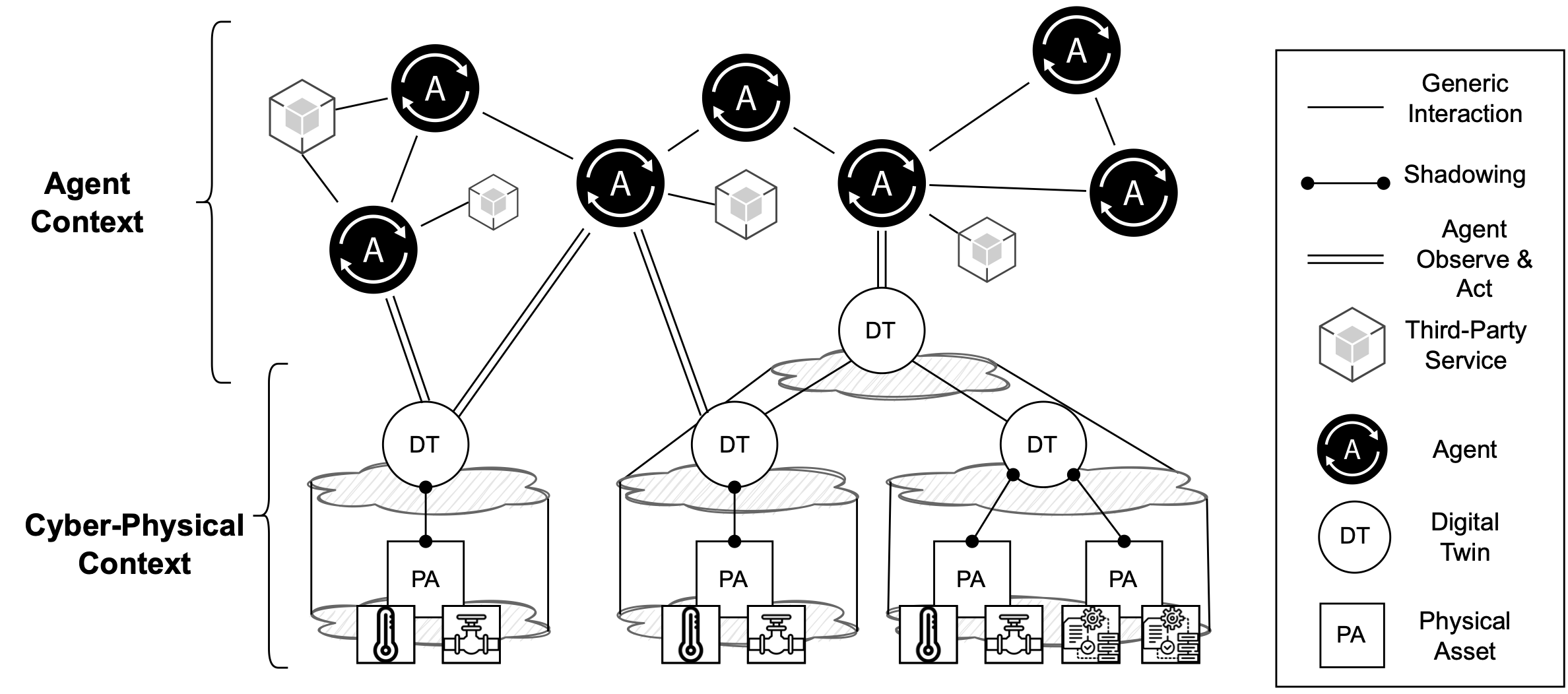
This separation allows for assigning clear responsibilities during system design!
DTs for agents and MAS
- DTs are akin to artefacts of the A&A metamodel...
- used by agents
- structuring the environment
- mediating interaction
- ...but also fundamentally different
- bi-directional synchronisation with PAs
- faithful representation of the (physical) dynamics of the PA
Omicini, A., Ricci, A., Viroli, M.: Artifacts in the A&A meta-model for multi-agent systems. Autonomous Agents and Multi-Agent Systems 17(3), 432–456 (2008)
Individual perspective
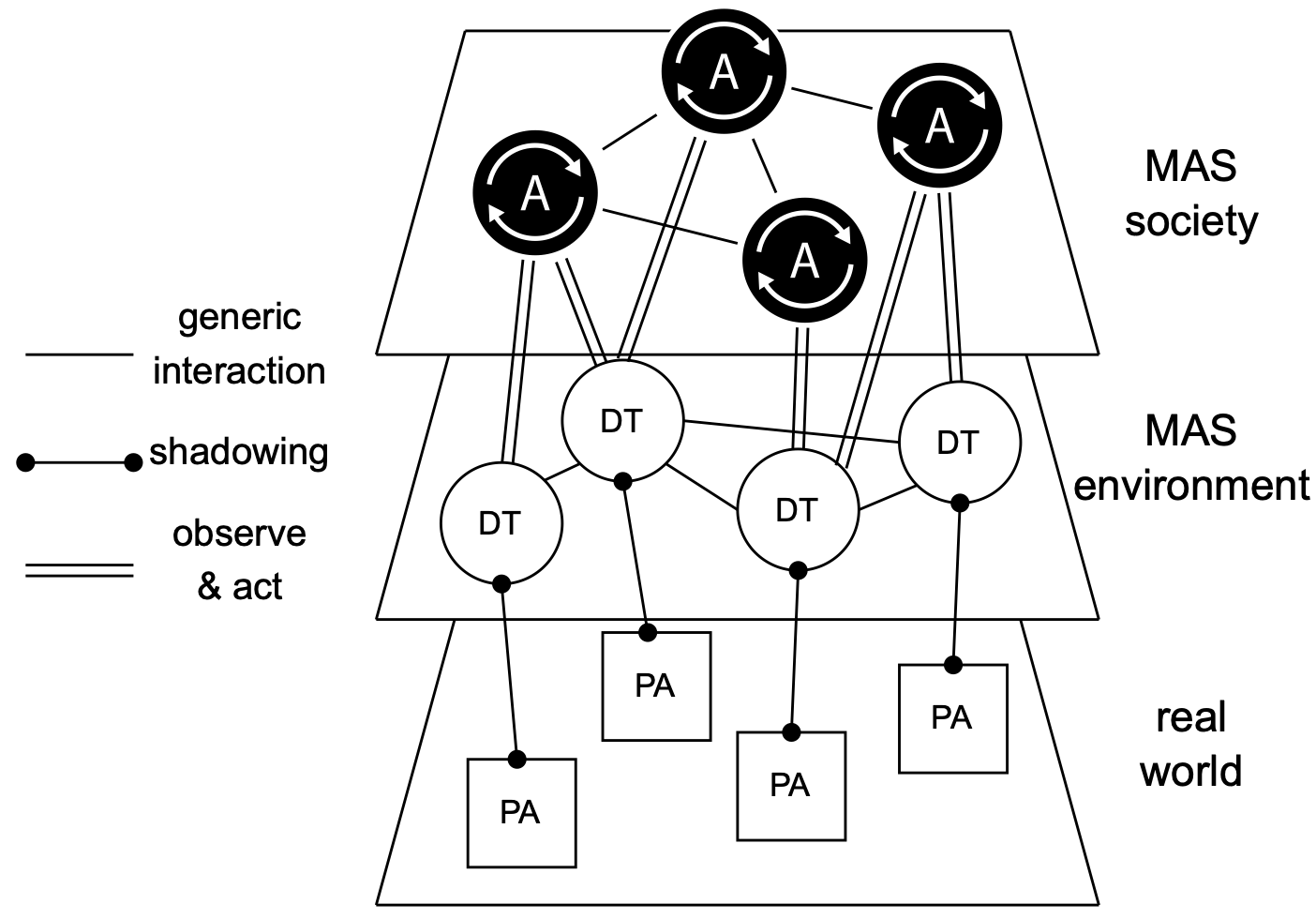

Agents delegate to DTs tasks requiring knowledge of the local PA context
System perspective
- The literature is abundant on what to expect from an individual DT
- Not much is said about networks of DTs
- can DTs be linked together to structure the virtual environment?
- should such structure be hierarchical?
- can it be changed dynamically?
- if so, by the application (agents) or by DTs themselves?
Web of Digital Twins: application-dependent knowledge graphs, dynamically established amongst DTs depending on CPS dynamics and application goals
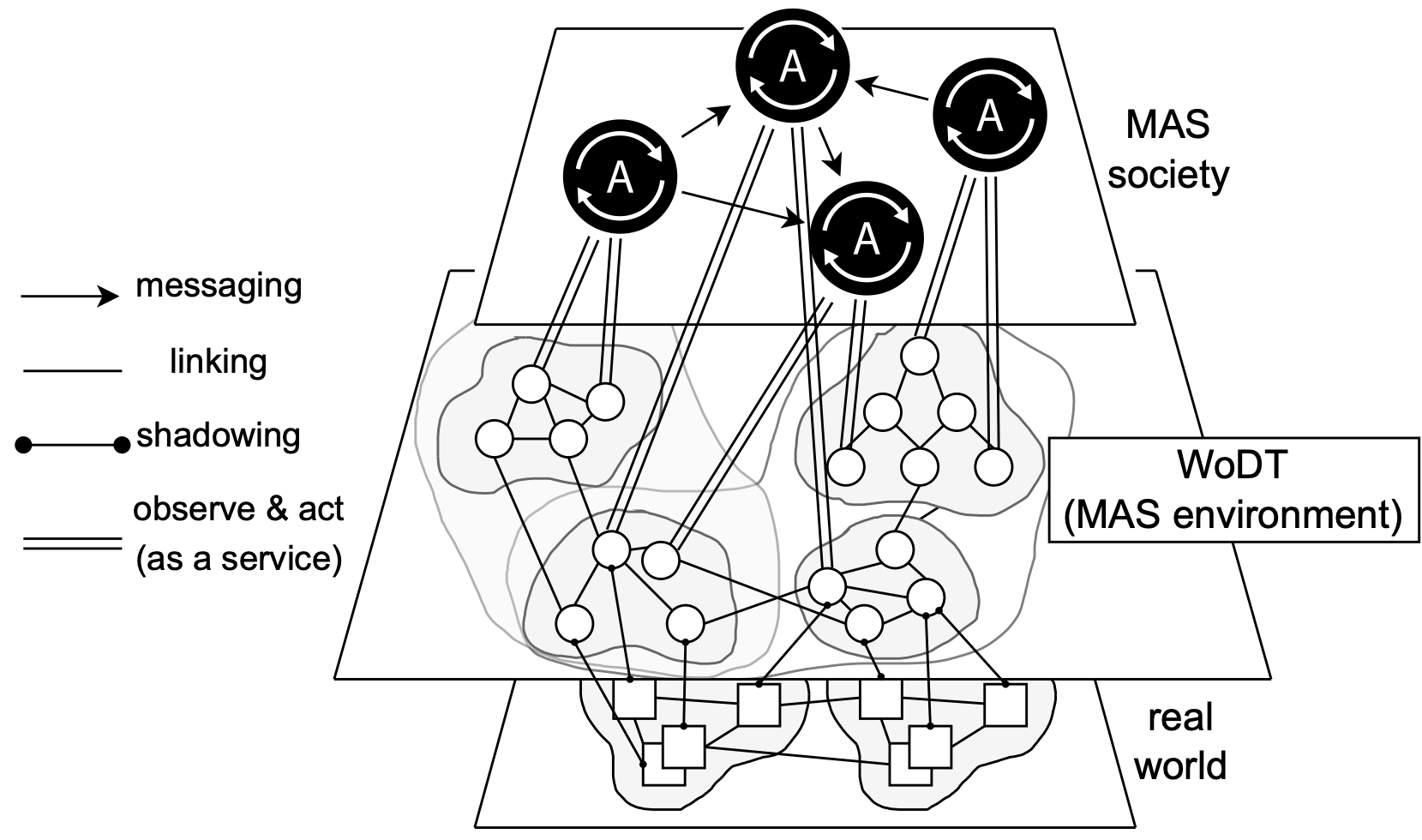
Ricci, A., Croatti, A., Mariani, S., Montagna, S., Picone, M.: Web of digital twins.ACM Trans. Internet Technol. (dec 2021). https://doi.org/10.1145/3507909
Agents and MAS for DTs
- Agents as enablers of intelligent behaviours
- domain-independent models available (e.g. BDI)
- encapsulation of (reusable) decision making
- "as-a-service" perspective orthogonal to applications
- Agents as orchestrators and mediators
- handling DTs lifecyle
- monitoring and controlling execution
- enacting coordination mechanisms and protocols
Individual perspective
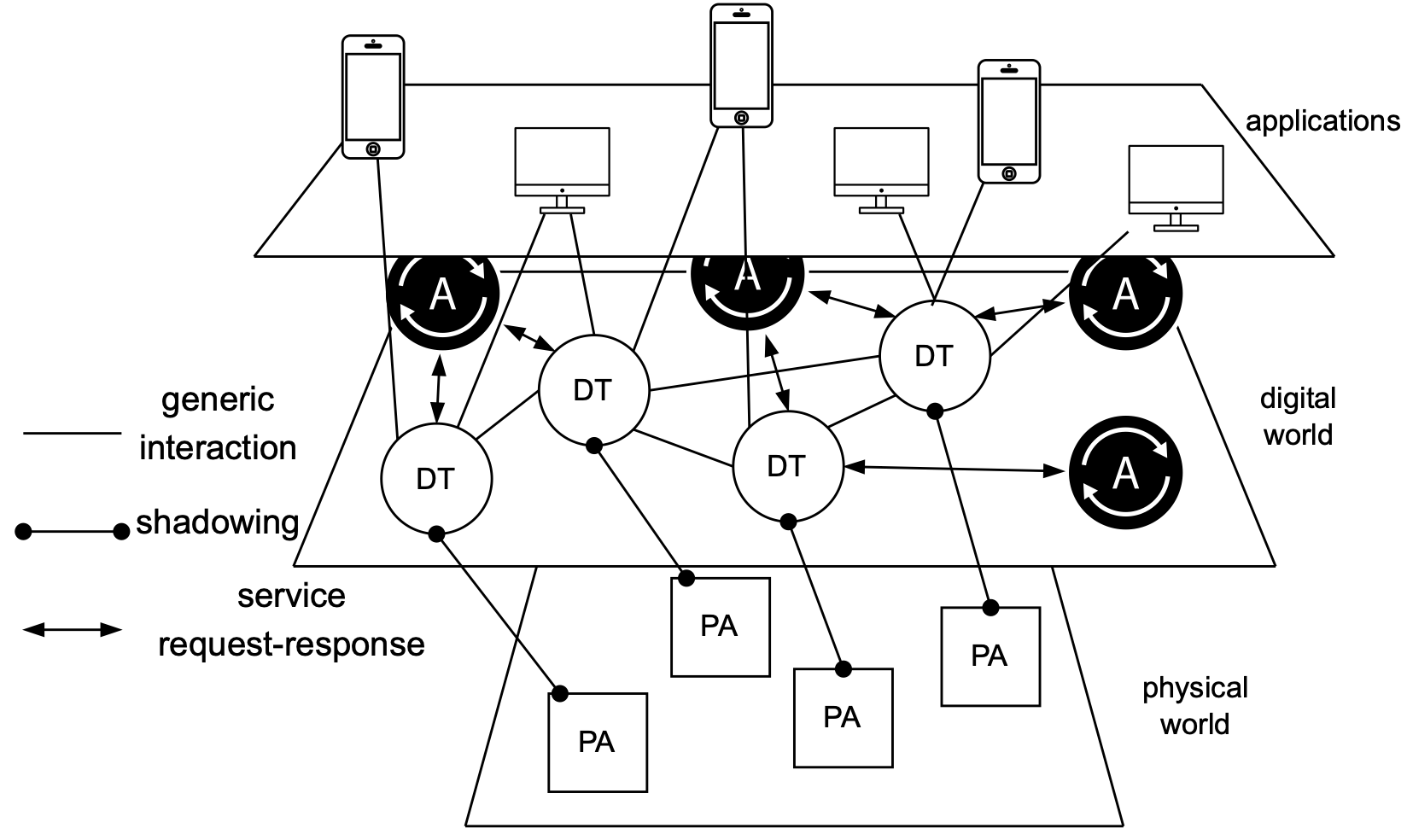
DTs delegate to agents "intelligent" tasks (reasoning, prediction, ...) that requirebroader context w.r.t. the local one accessible to DTs
System perspective
- Again, the literature is lacking about an open systems perspective:
- who is responsible for DTs lifecycle (e.g. binding to PAs, synching, etc.)?
- is there a "God-like" orchestrator?
- how can DTs interact in meaningful ways towards application goals?
- is DTs aggregation akin to service composition enough?
Agents as mediators (left): DTs express the intended interaction semantics (e.g. CFP), delegating to agents the figuring out of interaction sequences
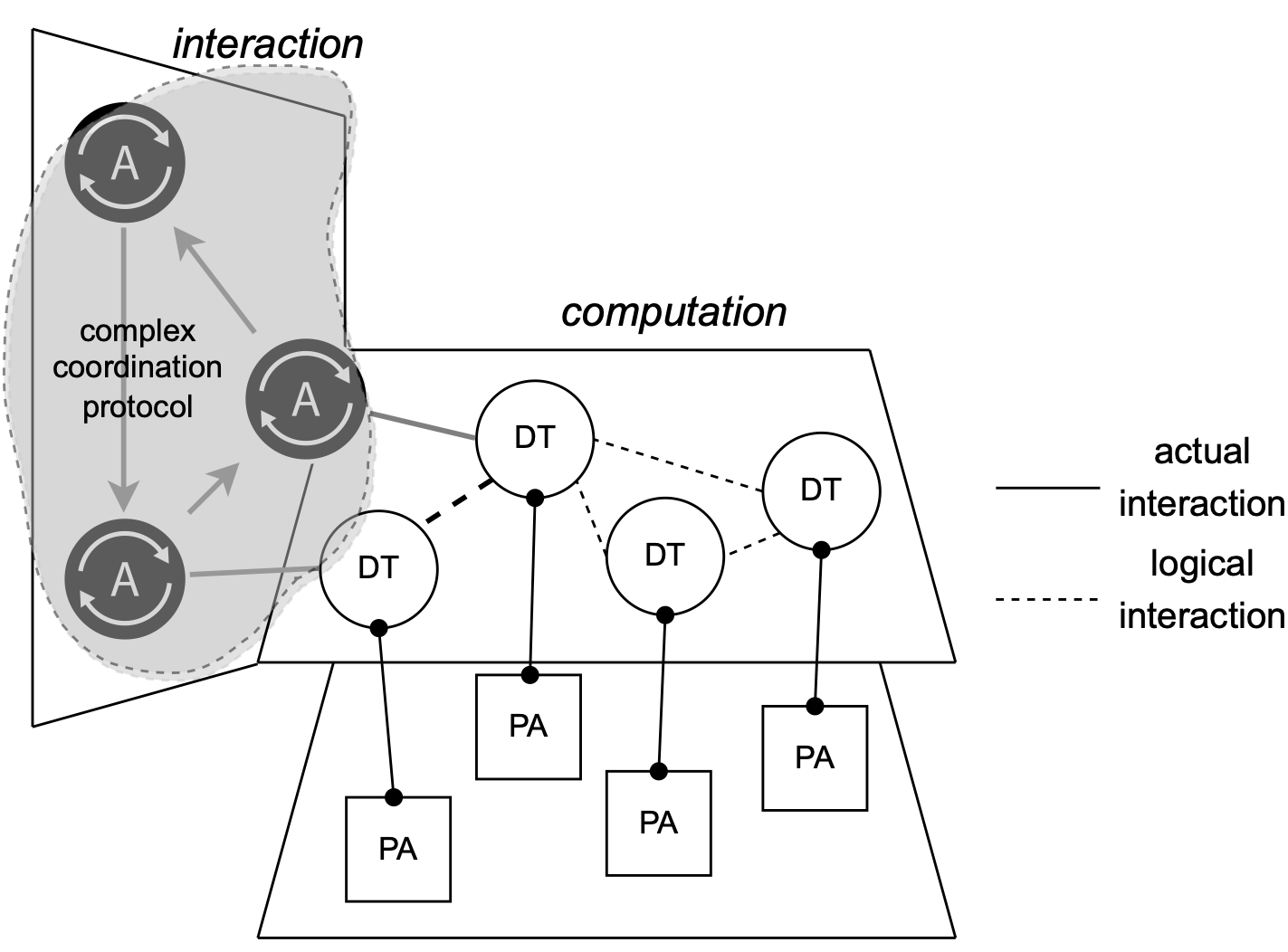
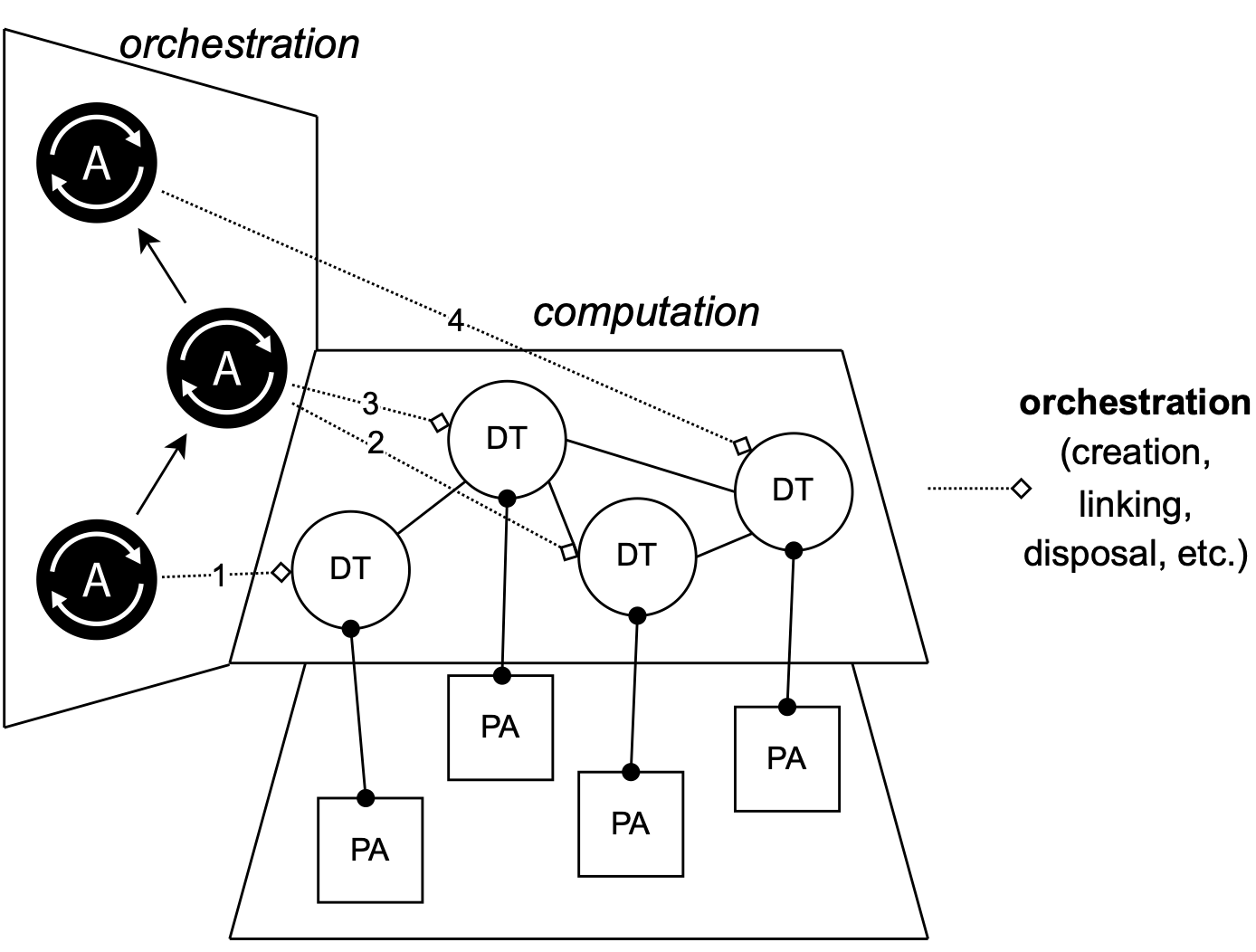
Agents as orchestrators (right): DTs seamlessly execute while agents take care of"DevOps" (e.g. creation, linking, migration, scaling, disposal, ...)
Research Directions 1/2
- Cross-fertilisation opportunities revolve around two core ideas:
- adopt DTs as the engineering abstraction to structure and encapsulate CPS resources and dynamics
- adopt agents as the engineering abstraction to encapsulate goal-oriented decision-making
As decision making depends on the CPS state (and viceversa), synergistic exploitation of agents and DTs is more of a requirement than a nice to have!
Research Directions 2/2
- Cognitive DTs: what if the DT can autonomously evolve through simulation and AI-enabled techniques?
- Anticipatory planning: how can DTs and agent cooperate to plan ahead through prediction and what-if analysis?
- Socio-technical systems: how about DTs virtualising people and organisation besides PAs?
- Mirror worlds: how about digital artefacts reified in our physical world (e.g. holograms)?
- Standardisation & interoperability: can DTs standardise agents means of interactions with environments?
Thanks
for your attention
Are there questions?
(we hope so 😊)